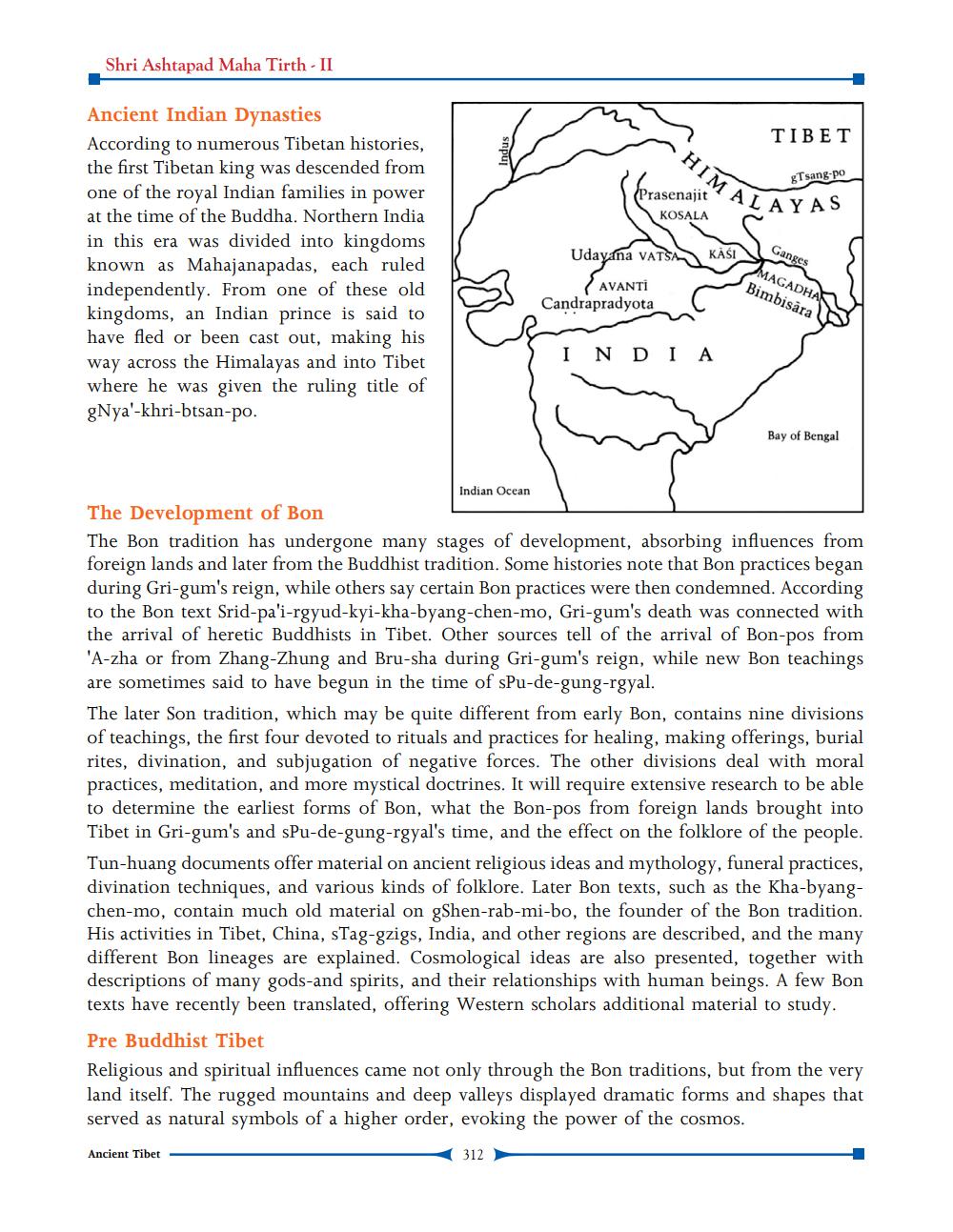________________
Shri Ashtapad Maha Tirth - II
TIBET
HIMA
gTsang-po
(Prasenajit
KOSALA
ALAYAS
Ancient Indian Dynasties According to numerous Tibetan histories, the first Tibetan king was descended from one of the royal Indian families in power at the time of the Buddha. Northern India in this era was divided into kingdoms known as Mahajanapadas, each ruled independently. From one of these old kingdoms, an Indian prince is said to have fled or been cast out, making his way across the Himalayas and into Tibet where he was given the ruling title of gNya'-khri-btsan-po.
Udayana VATSAKĀŠI
AVANTI Candrapradyota
Ganges MAGADHAR
| Bimbisāra
INDIA
Bay of Bengal
Indian Ocean The Development of Bon The Bon tradition has undergone many stages of development, absorbing influences from foreign lands and later from the Buddhist tradition. Some histories note that Bon practices began during Gri-gum's reign, while others say certain Bon practices were then condemned. According to the Bon text Srid-pa'i-rgyud-kyi-kha-byang-chen-mo, Gri-gum's death was connected with the arrival of heretic Buddhists in Tibet. Other sources tell of the arrival of Bon-pos from 'A-zha or from Zhang Zhung and Bru-sha during Gri-gum's reign, while new Bon teachings are sometimes said to have begun in the time of sPu-de-gung-rgyal. The later Son tradition, which may be quite different from early Bon, contains nine divisions of teachings, the first four devoted to rituals and practices for healing, making offerings, burial rites, divination, and subjugation of negative forces. The other divisions deal with moral practices, meditation, and more mystical doctrines. It will require extensive research to be able to determine the earliest forms of Bon, what the Bon-pos from foreign lands brought into Tibet in Gri-gum's and sPu-de-gung-rgyal's time, and the effect on the folklore of the people. Tun-huang documents offer material on ancient religious ideas and mythology, funeral practices, divination techniques, and various kinds of folklore. Later Bon texts, such as the Kha-byangchen-mo, contain much old material on gShen-rab-mi-bo, the founder of the Bon tradition. His activities in Tibet, China, sTag-gzigs, India, and other regions are described, and the many different Bon lineages are explained. Cosmological ideas are also presented, together with descriptions of many gods-and spirits, and their relationships with human beings. A few Bon texts have recently been translated, offering Western scholars additional material to study. Pre Buddhist Tibet Religious and spiritual influences came not only through the Bon traditions, but from the very land itself. The rugged mountains and deep valleys displayed dramatic forms and shapes that served as natural symbols of a higher order, evoking the power of the cosmos.
Ancient Tibet
312




